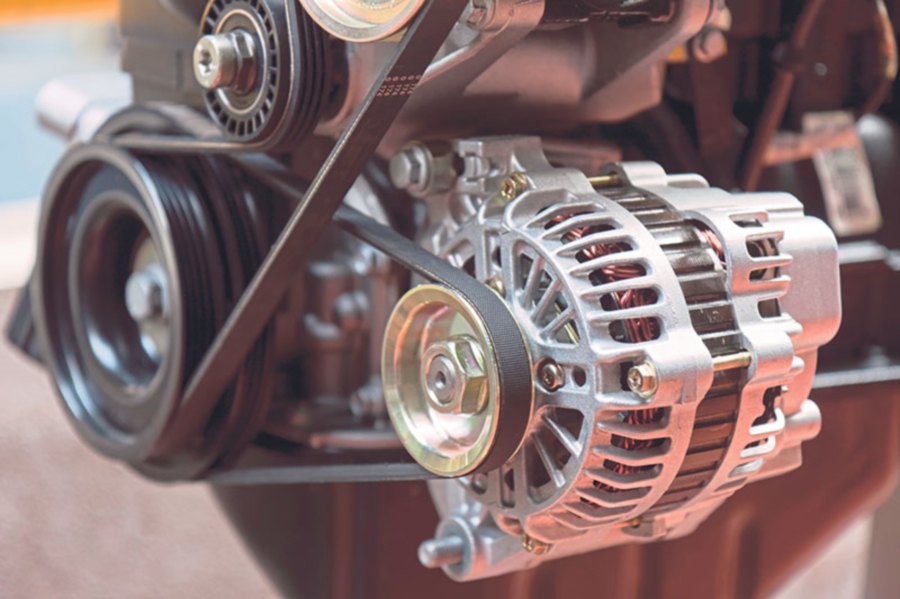IT is fairly common to see a broken down car by the side of the road. While flat tyres are usually the problem, other times it is usually something to do with the car’s electrical system, especially if the bonnet is open.
Well, sometimes it is to dupe the authorities and get a free parking spot (shame on you).
If it is the electrical system at fault, it is useful to know where to look for the problem before you call your foreman on a lazy Saturday afternoon (thus making him extra cranky).
Your car runs on a battery and an alternator. Various systems run off these two components through a fuse and relay box.
We had covered the maintenance and care of your battery in a previous article so we will concentrate on the alternator and the wiring system of your car.
In any case, your battery is a storage for energy needed to power the starter, the ignition circuits and fuel circuits. Once the car starts, it is the alternator that takes over the role of providing electrical current and charging the battery for the next time you need to start it.
Your car can start with a faulty alternator, but it won’t be able to run for an extended period of time as it is running on the battery power. You will be able to see the battery icon light up on your dashboard in this case.
From my experience, you have less than 20km of range if you see the alternator or battery icon light up. Get to a workshop pronto!
To fully understand your car’s electrical system, it is necessary to understand a few concepts. In the negative earth-return system in your car, the current flows from the positive terminal of the battery to the component being operated. The component is earthed to the car body, which is then earthed to the negative terminal of the battery.
The strength of the current is measured in amperes (amps); what drives it round the circuit is called voltage (volts). All modern cars have a 12-volt battery and its capacity is measured in amps/hours. A 56 amp/hour battery should be able to deliver a current of one amp for 56 hours, or two amps for 28 hours.
You can find the rating of your battery printed on its side. If the battery voltage drops, less current flows, and eventually there is not enough to make the components work so the alternator is the component that ensures it is constantly topped up.
Wire and cable sizes are classified by the maximum amperage that they can carry safely. A complex network of wires runs through the car. To avoid confusion, each wire is colour coded and you can find a diagram in your car’s manual. It is a useful guide to trace wiring faults and find out where you might add accessories and such.
CURRENT, VOLTAGE AND RESISTANCE
Any wire resists the flow of current and this is called resistance, and is measured in ohms.

Thin wires conduct less easily than thick ones, because there is less room for the electrons to travel through. A thick wire causes less resistance and runs cooler as a result. That is why your bulbs’ filament glows, it is exceptionally thin.
However, a component with a high current consumption must not be connected using wires that are too thin, or the wires will overheat, blow the fuse, or burn out.
SHORT CIRCUITS AND FUSES
Sometimes a wrong-sized wire is used or a wire becomes broken or disconnected and this can cause an accidental short circuit which bypasses the resistance of the component.
The current in the wire may become dangerously high and melt the wire or cause a fire.
Beware of mechanics or wiremen that use thin wires on any component you install in your car. Otherwise you may be in line at the insurance claims department.
Do not assume they know what they are doing. Some high powered components will need a relay wired into its circuit to prevent overheating i.e. foglamps or amplifiers.
THE FUSE BOX
The fuse box is your guardian. It protects your car and components from short circuits. To do this it supplies ancillary circuits with, yes, fuses.
Know the location of your fuse box (use your car manual if necessary). Some cars have more than one.
There are several types of fuses, so make sure you keep some spares of the correct type and ratings.
The size of the fuse wire is the thinnest that can carry the normal current of the circuit without overheating, and it is rated in amps. A sudden surge of high current in a short circuit makes the fuse wire melt, or “blow”, breaking the circuit.
If this occurs, replace the fuse with another of the correct rating. Do not replace it with a higher rating, otherwise you may overload the component(s) in question.
ANCILLARY CIRCUITS
The starter motor has its own thick cable, connected directly from the battery through a starter relay.

The ignition circuit supplies high-tension impulses to the spark plugs; and the charging system includes the alternator, which charges the battery.
These are separate from ancillary circuits. They are wired through the ignition switch, so that they work only when the ignition is switched on.
This prevents you from accidentally leaving something switched on that may cause the battery to go flat (unless you always forget to switch off the lights after you’ve parked. Lights are sometimes wired independently).
The side and tail lights, however, are always wired independently of the ignition switch and are sometimes called parking lights. The hazard switch is always independent as well.
When fitting extra accessories which consume a heavy current, always wire it through the ignition switch, through a relay if necessary, and always fuse them.
A common question is why there is an ACC or AUX position in the ignition switch. This is to allow some components to be turned on with the engine off, such as the radio.
If you feel that this is a bit hard to comprehend, imagine what your wireman goes through when you come to the shop with an electrical problem.
Most wiremen have grey hair, so sometimes to avoid these grey hair, it is best to leave electrical wizardry to the experts.
But at least now you know a little more about your car.





